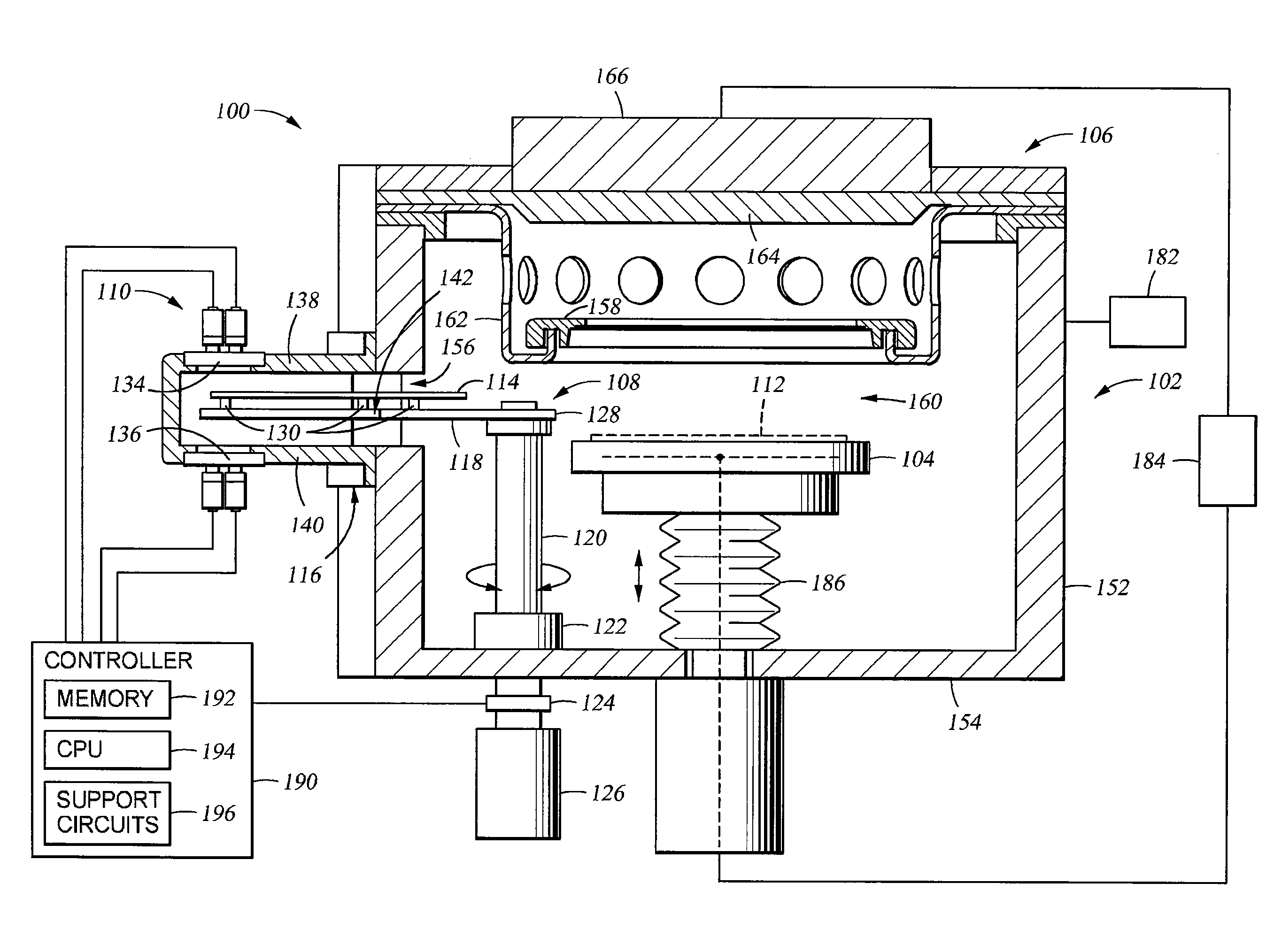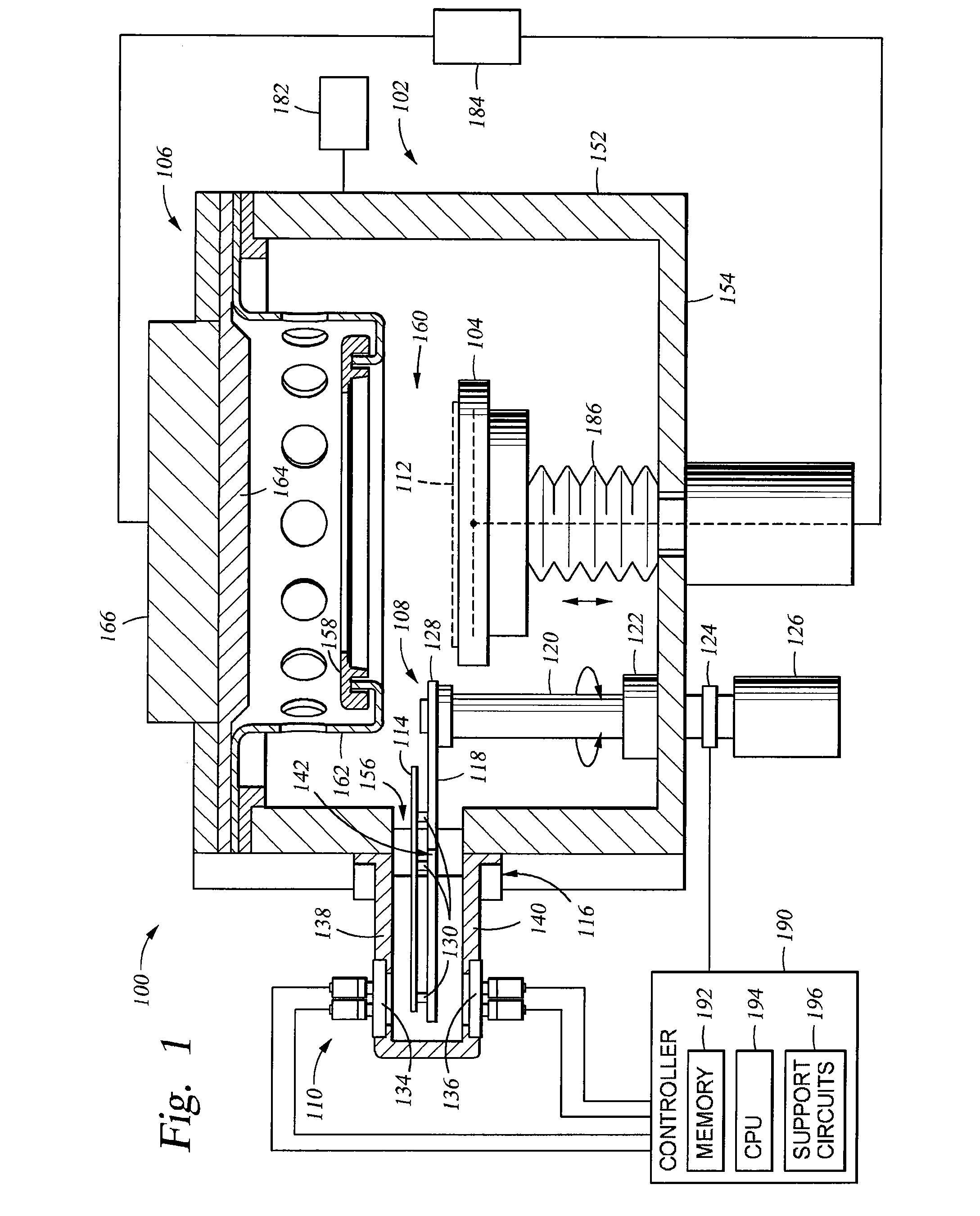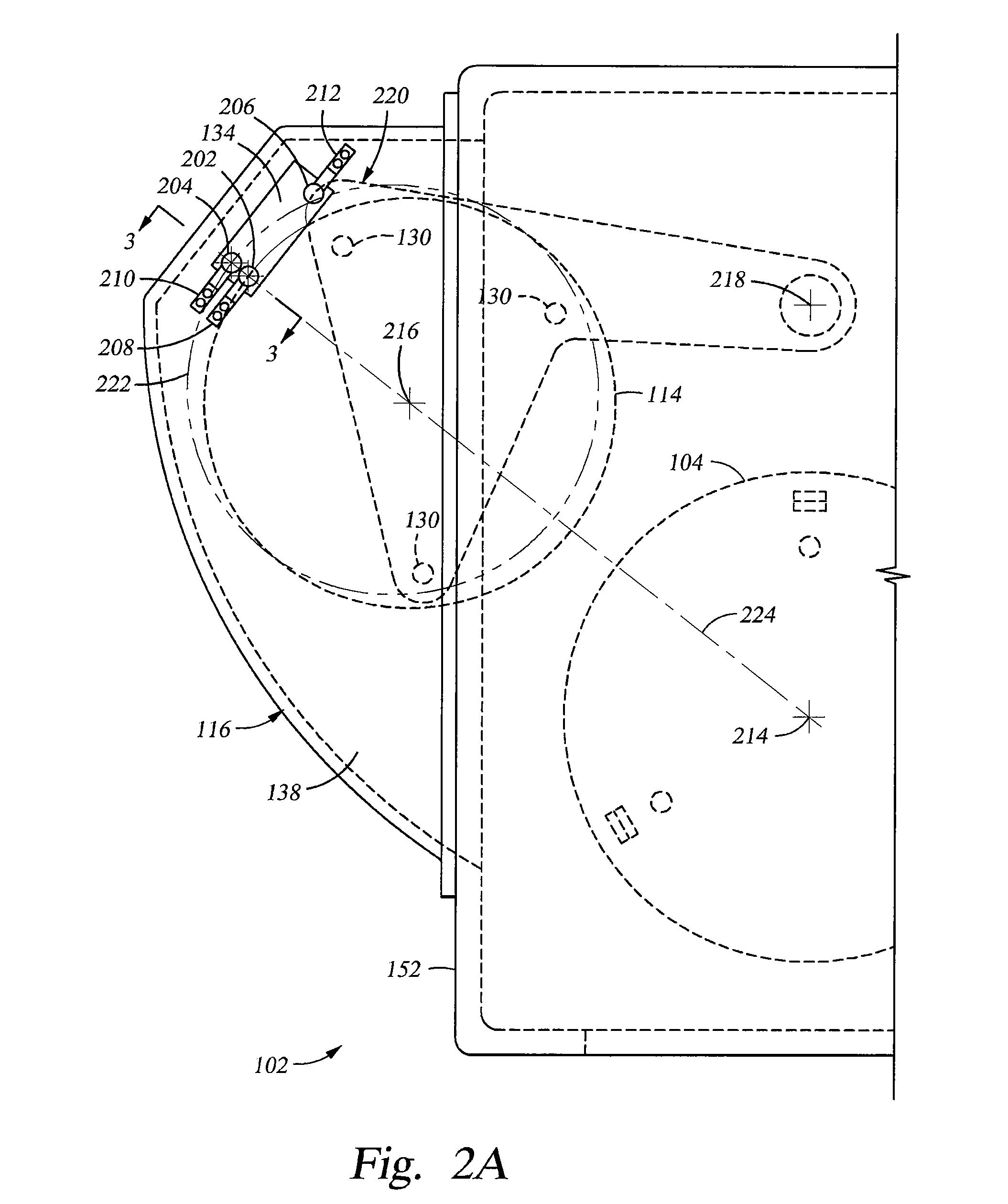Shutter blade and robot blade with cte compensation
a robot blade and cte compensation technology, applied in the direction of vacuum evaporation coating, manufacturing tools, arms, etc., can solve the problems of reducing the usable life of the heater, and affecting the operation of the heater
- Summary
- Abstract
- Description
- Claims
- Application Information
AI Technical Summary
Benefits of technology
Problems solved by technology
Method used
Image
Examples
Embodiment Construction
[0040]Embodiments of the disclosure generally provide one or more deposition conditioning assemblies that are adapted to prevent deposition of a material on critical components within a processing chamber during one or more conditioning operations, such as a burn-in or pasting processes. In some configurations, the deposition conditioning assemblies may include a utility wafer that is used to protect the critical components found within the processing chamber. In some embodiments, a semiconductor processing system having a sensor assembly adapted to detect a cleared position of the utility wafer, such as a shutter disk is generally described herein. The “cleared position” is generally defined as a position where a substrate support (and substrate seated thereon) may move vertically without contacting the shutter disk or mechanisms associated with the movement of the shutter disk. Although the embodiments are described in a physical vapor deposition chamber, the disclosure is one of ...
PUM
| Property | Measurement | Unit |
|---|---|---|
| CTE | aaaaa | aaaaa |
| distance | aaaaa | aaaaa |
| thermal compensating | aaaaa | aaaaa |
Abstract
Description
Claims
Application Information
 Login to View More
Login to View More - R&D
- Intellectual Property
- Life Sciences
- Materials
- Tech Scout
- Unparalleled Data Quality
- Higher Quality Content
- 60% Fewer Hallucinations
Browse by: Latest US Patents, China's latest patents, Technical Efficacy Thesaurus, Application Domain, Technology Topic, Popular Technical Reports.
© 2025 PatSnap. All rights reserved.Legal|Privacy policy|Modern Slavery Act Transparency Statement|Sitemap|About US| Contact US: help@patsnap.com



